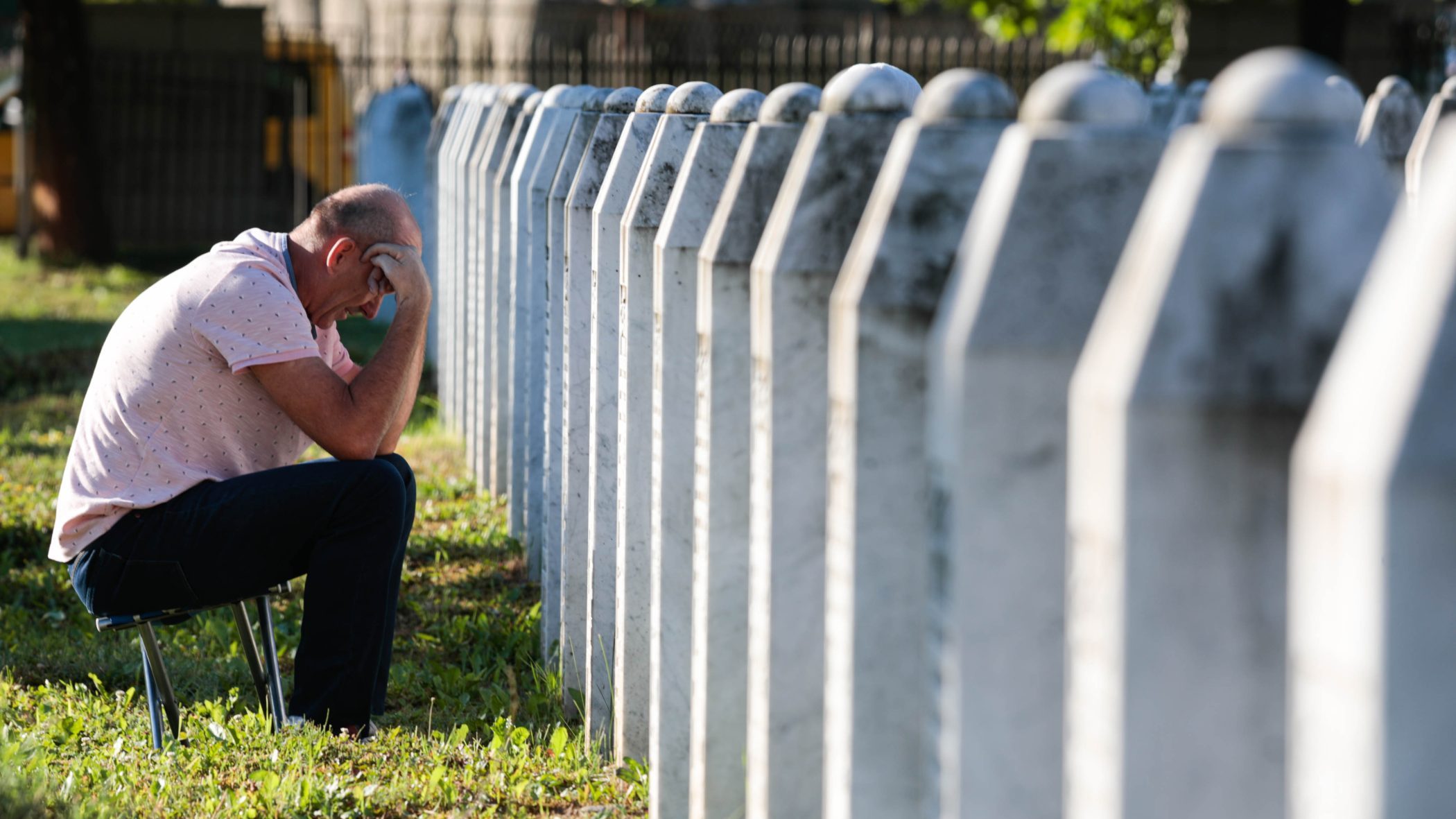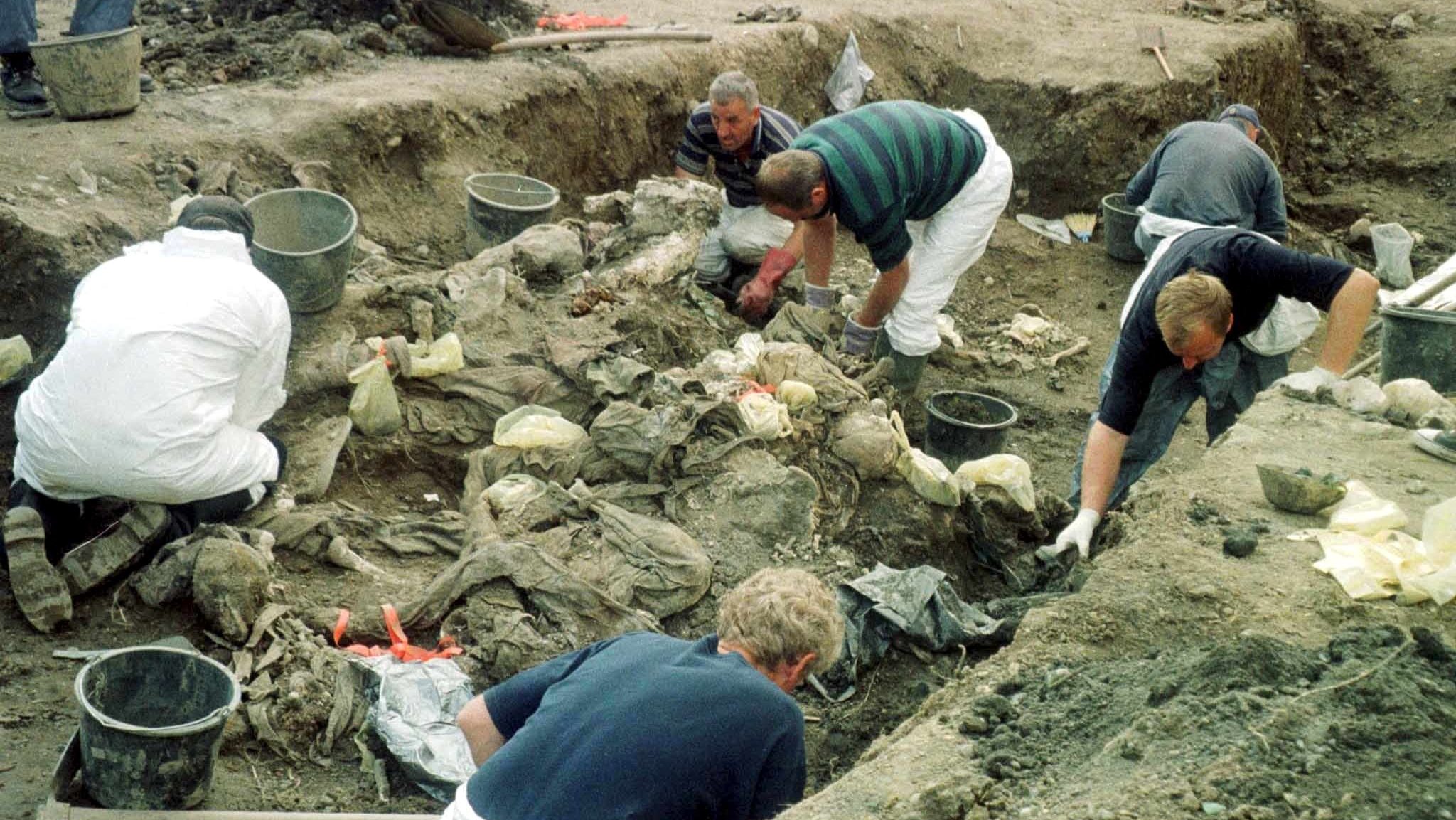This post is also available in: Bosnian
Mustafa Djelilovic, Fadil Covic, Mirsad Sabic, Nezir Kazic, Becir Hujic, Halid Covic, Serif Mesanovic, and Nermin Kalember have been charged with acts of unlawful detention, inhumane treatment, physical and mental suffering, depriving captives with the right to a fair trial, and having captives perform forced labour.
The prosecution sought to prove these claims by examining 77 witnesses and presenting more than 1400 pieces of material evidence. The majority of the witnesses were former captives who described their capture, detention and abuse during the trial.
The prosecution claims that Djelilovic, the former president of the municipality of Hadzici, the president of the crisis committee and of the wartime presidency of the municipality, and Fadil Covic, the chief of the public safety station and a member of the crisis committee, knew about the conditions in the detention camps. The prosecution alleges that they failed to provide minimal living conditions for the detainees and didn’t allow them to be relocated to other facilities.
The indictment alleges that at the time Mirsad Sabic was the commander of the Pazaric police station. Nezir Kazic was the commander of the 9th Mountain Brigade of the Bosnian Army. Becir Hujic was the manager and deputy manager at Silos, and Covic performed the same functions. Serif Mesanovic was one of the deputy managers at Silos and the manager of the detention camp in the Krupa military barracks. Kalember was a guard at Silos.
Beating and Interrogation of Captives
During the trial, witnesses said the arrests of Serb civilians from the Hadzici area began in May 1992. After their arrest, they were detained in the Silos or 9 Maj detention facilities in Pazaric. They described their arrival to these facilities as terrifying.
Radmilo Sogora said he was taken to the 9 Maj detention facility, which was previously a school building, after his arrest. While going to the school’s gym, where the detainees were held, he said he was hit with a rifle.
“I entered the school gym and saw about 50 persons. Some looked fine, and some had injuries. They told me that they were beaten,” said Vasilije Krunic, who was detained in June 1992.
Former captives said they were taken away from the gym for interrogation. Some of them were beaten as well.
“I was interrogated about the weapons and a radio station. I signed a statement and that was it, but I know that other persons were taken out, interrogated, and beaten. If you didn’t sign the statement, they tore out your kidneys. Nobody beat me, though,” said Milorad Petric.
Branko Suvajlo said that upon his arrival at the Silos detention facility he had to walk through columns of soldiers. Upon entering Silos, new arrivals were placed in cells alongside beaten prisoners.
“They took us to cell number five. There, I found persons of Serb nationality. The cell was bloody from beatings,” said Slavoljub Krivic.
Former captives said they were mostly beaten and abused during the beginning of their detention at Silos. Djordje Andric said when he arrived to his cell, six police officers took him out and beat him. Vinko Lale said he was forced to stand in water all night.
“Once, some people told me to take the bucket in which we relieved ourselves. I had to empty the bucket on my head. That humiliated me the most. This event took place during the first few days after my arrival at the camp, and I stayed there for months. After that, I never took a bath or washed my hair,” said Radmilo Sogura.
Witnesses also described the arrival of a group of soldiers in mid-1992, who went from cell to cell to beat the captives.
“They came to my cell. I was beaten by a young soldier who didn’t have the strength to topple me. I stood there until a more serious man came and started to beat me. Then I lost consciousness,” said Djordje Suvajlo.
Risto Mijatovic said during his detention at the Silos detention camp he slept on a concrete floor covered in dust. He said a typical meal at Silos was “a piece of bread and five spoons of soup.”
“When you get a piece of bread to eat, and a crumb drops on the floor, you look for it and eat it even though it’s full of dust,” said Mijatovic.
The indictment alleges that several persons died during their detention at the Silos. Witnesses said some captives died of starvation, and that meals improved after the death of a prisoner and the arrival of the Red Cross.
“Petko Krstic was my first cousin. He was with me in the cell. He was lying half dead. His last words were, ‘Bread, bread!’ He could not bear the hunger and he died,” Spasoje Kovacevic said.
Differing Reports on Detention Managers
According to former captives, the manager of the Silos detention facility was Becir Hujic. His deputy was Halid Covic, who later became the manager of the facility. They said they complained to Hujic about the living conditions in the camp.
Novica Suvajlo said they complained to the manager about the arrival of paramilitary groups to the camp, but the manager said he “was not aware of that.” Predrag Kapetina said the guards were ordered to beat them.
“In the beginning, whoever wanted to enter Silos could, because there was no padlock. So, some soldiers came, some women…They came and beat , and then the manager would ask who did it – as if he didn’t know who did it, and we went to see him,” Kapetina said.
Some witnesses, however, described Hujic and Covic as correct and professional.
Nermin Kalember was one the guards at the Silos detention camp. Some described him as a harsh guard who beat and abused captives. Nenad Kostic said Kalember physically abused him, while Ugljesa Kuljanin and Jovo Krstic said they had both been beaten by Kalember on one occasion.
“He was harsh and rude. He thought he was the supreme law since he walked over us with a gun,” said Radmilo Sogura.
However, several other witnesses said he helped captives. “Kalember honestly helped me when we were cutting wood once. He loaded the wood with me. He would also throw bread into the cell,” said Slavoljub Krivic.
The guards said they behaved correctly towards captives.
“Mesanovic Serif issued a strict order to us that no one should go to the jail and abuse the captives,” said Uzeir Bajric, a former guard at the Krupa detention facility.
Reports of Deaths from Forced Labour
The captives from the 9 Maj detention facility were relocated to the Krupa detention facility in the summer of 1992. A group of captives from the Silos detention facility were also brought to Krupa over the course of that year. They said conditions at Krupa were better, and that the manager of the Krupa detention facility was Serif Mesanovic.
Slavko Jovicic one of the Silos detainees who were transferred to Krupa. He said he performed forced labour for the first time in March 1993.
“These were jobs digging trenches, bunkers or unloading merchandise…We would be beaten when the other army shelled Muslim positions. They beat us to the point of exhaustion, and then left us among the living only in order to perform labour again tomorrow,” said Jovicic.
Witnesses said they were taken to Mount Igman, Hrasnica and Butmir to perform forced labour – some captives allegedly died as a result.
“Jadranko Glavas was killed on Igman. He was beaten by the Muslim army. Milomir Petric was also killed there. He was forced to run and stepped on a mine. Milan Krstic was executed in the area of Hrasnica,” said Dragan Regoja.
Although the majority of captives in the Hadzic area were of Serb nationality, after the conflict between the Bosnian Army and the Bosnian Croat Army, members of the Bosnian Croat Army were also detained there. They said that they were captured on the frontline, but were exchanged after a few months.
The Serb captives claimed they were arrested and detained because of their nationality, while the guards and police officers said they were arrested because of weapons they possessed. Some captives admitted during the trial that they had been given weapons at the beginning of the war.
Aziz Fiso, a former member of the crisis committee, said the committee decided to disarm the Serb community after they found that “every man of Serb nationality was armed.”
“According to the law, the persons with whom the weapons have been found could be kept in custody for 72 hours or could be surrendered to the investigating judge. But at that time, there was no court in this area and you couldn’t go to another court because everything was blocked. Later, judges came from Zenica,” said Rifat Cardakovic, explaining why the captives were held in custody for such a long time.
During their stay at the detention facilities, some captives were provided with the reasoning for their detention and with an indictment – some of them went on to face trial. However, the captives say that this was done solely to justify their detention.
A former judge from Zenica, Mladen Veseljak, said that in 1993 he presided over a trial involving detainees in Tarcin. He was told that “they were armed by the Serbian Democratic Party.”
The former commander and deputy commander of the First Corps of the Bosnian Army, Vahid Karavelic, said that the Silos detention camp was under the control of civilian authorities, and that the government and presidency of Bosnia and Herzegovina were aware of the facility.
“Everyone was washing their hands of the Silos and tried to attribute it to the First Corps. The command of the Corps and myself, are not responsible for the Silos ,” said Karavelic.
Some captives spent more than 1300 days in detention facilities in Hadzici. They were exchanged in January 1996, more than a month after the peace agreement that ended the war in Bosnia and Herzegovina was signed. Former captives say they still live with the consequences of their time in the detention camps.
The defense teams’ presentation of evidence began on April 9.




